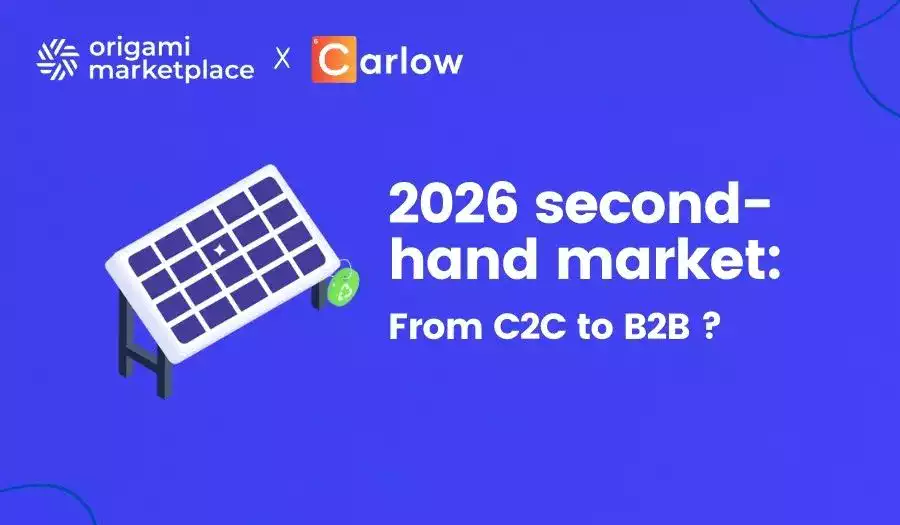How to create a second-hand marketplace like Vinted.
- Emeline Kerloch
- 4 minutes reading

Key points to consider when building a marketplace like Vinted:
Understanding Vinted's business model.
- Commissions on sales: charged to buyers in the form of “buyer protection”. This is €0.70 per item plus 5% of the item’s value.
- Wardrobe and item promotion: to increase visibility, users can either pay $6.95 to promote their wardrobe for 7 days, or pay a small percentage of the sale price of a single item.
- Authentication service: For $25 per item, users can have the authenticity of their products verified, filling a critical need for luxury items.
The pillars of Vinted's success.
The multi-vendor marketplace, an appropriate model for the second-hand market: Vinted promotes the circular economy by facilitating the resale of used clothing between individuals, thereby reducing the environmental footprint of the fashion industry. The second-hand market has exploded between environmental awareness and declining household purchasing power. According to surveys, in 2022, 80% of online shoppers have bought or sold at least one used product. Consumers have developed the habit of checking the availability of a used product before considering buying a new one. Vinted has launched its own consignment delivery service to limit last mile pollution. This reinforces its environmental vision.
An easy-to-use interface: Vinted’s interface is intuitive and user-friendly. The brand has simplified its user experience as much as possible. This encourages users to visit the platform regularly. Moreover, the platform has a mobile application, enabling users to log on at any time, from anywhere, to buy or sell second-hand clothes in just a few clicks. Registration is quick and posting items is simple. Buyers can then chat with sellers and suggest prices.
A strong community: Vinted has built a community of engaged buyers and sellers, the “Vinties”. This is critical to the success of any online marketplace. Vinted communicates a lot on social networks. They encourage users to share what they find with their friends. The platform also offers a forum where Vinties can exchange tips on how to buy and sell better.
Download our free marketplace specifications template.
Here you will find all the essential features to succeed in your C2C, B2C or B2B multi-vendor marketplace. This model provides a simple backlog to guide you through each step of your project.
The challenges ahead for your business, such as Vinted.
Dispute resolution: The platform must be able to mediate in the event of a dispute between a seller and a buyer. Having a good dispute management team is critical to build user confidence in the platform. A clear policy for handling disputes and managing returns is also essential.
These challenges are also addressed through built-in features. Our three-way messaging system simplifies communication between buyers and sellers. It allows smooth negotiations and customer service. In the event of a dispute, the platform operator can intervene discreetly to ensure a quick resolution and customer satisfaction, while keeping interactions secure.
Counterfeit management: Attempts to post ads offering counterfeit products are common. Vinted has implemented a product authentication service, a paid option that allows buyers to be sure that the product being sold is not a copy.
Team tips 🎓
Current trends in the second-hand market.
The rise of C2C platforms: The second-hand market is growing rapidly. According to a recent report, the second-hand market is expected to reach $77 billion by 2025. Consumers are increasingly aware of the environmental impact of their purchases and are looking for sustainable alternatives. In addition, the global economic crisis has pushed many consumers to look for more affordable options, which has greatly benefited platforms like Vinted.
The impact of sustainable fashion: Sustainable fashion is a big trend. Many brands and retailers are turning to more responsible production models and adding pre-owned options to their offerings. For example, giants such as H&M and Zara have launched their own resale initiatives, underscoring the growing importance of used goods in the fashion industry.
The emergence of new specialized players: Innovative startups are emerging to meet the specific needs of the second-hand market. For example, Green Musicians (pictured below) specializes in the resale of used musical instruments, providing a platform for music enthusiasts looking for high-quality products at competitive prices. These new players add value by targeting specific niches and providing specialized services, helping to diversify and stimulate the second-hand market.

Key technology tools for a C2C platform.
Artificial intelligence and personalization: Artificial intelligence (AI) plays a critical role in personalizing the user experience. Recommendation algorithms can suggest items based on user preferences and behavior, increasing the likelihood of a sale. In addition, AI can help detect and eliminate counterfeits. For example, by improving security and trust on the platform, or by enhancing product sheets to make them more comprehensive.
Blockchain for tracking: Blockchain is an emerging technology that can guarantee product tracking and authenticity. By integrating blockchain, platforms can provide full transparency on the origin and ownership of items, which is particularly important for luxury goods.
Logistics automation: Logistics automation, through partnerships with automated delivery services and smart drop-off points, can significantly improve shipping efficiency. This not only reduces costs, but also improves user satisfaction by offering fast, flexible delivery options.
Launch your C2C platform for second-hand products with Origami Marketplace.
In short.
👋 Future online marketplace operator!
Discover how the Origami Marketplace API and partner network can transform your business, regardless of size, with its innovative solution based on the marketplace model.



